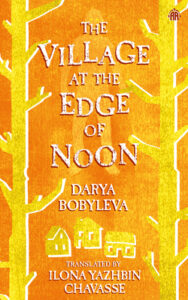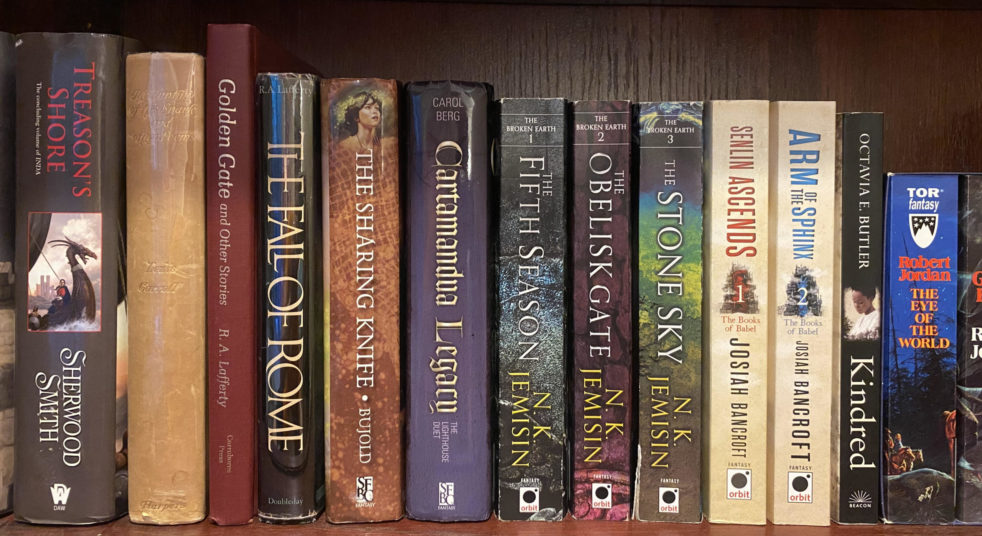
This review is based on an eARC (Advance Reading Copy) provided by the publisher via NetGalley in exchange for an honest review. The Village at the Edge of Noon will be released on December 2, 2025.
December and January are often pretty light on new releases, and I’m always on the lookout for more stories outside my own cultural context, so when I saw The Village at the Edge of Noon pop up in English, I decided to check out Ilona Yazhbin Chavasse’s translation of Darya Bobyleva’s Russian novel.
The Village at the Edge of Noon has a contemporary rustic setting in one of the exurban villages outside Moscow where many families spend their summers working family gardens outside small second homes. But one day, the path that connects it to the outside world disappears. Attempts to return to civilization by traveling the forest fail. And within the village, a series of bizarre occurrences put the residents at risks much more serious than being trapped through the long summer.
One of the risks of reading outside your cultural context is losing the shared reference points that underlie the work. There’s enough exposition to explain the concept of a dacha (one of the small plots that make up the titular village), but The Village at the Edge of Noon is stuffed full of folklore that I expect its original readers know quite well. And while there are no shortage of strange forests in English-language mythology, and it’s possible that some myths could be original to the author, there are moments that seem to anticipate shared understanding on the part of the reader that I simply don’t have. That’s probably to be expected in a translated work, but I’m sure it makes a difference in reception.
That said, missing some references isn’t a massive barrier to engaging with the story. Instead, the biggest struggle for me comes in the episodic nature of the tale. While the threads start to come together in the back half, the first half of the novel features a different lead character and different strange happening with every new chapter. It’s easy enough to see that there are some form of strange, magical entities at work, but the overarching nature of that work takes a backseat to detailing the travails of the various families. It’s a structure that can work, but without a lot of character or plot to carry it forward, it relies heavily on the individual episodes to sustain the narrative.
And those individual episodes are definitely strange and often horrific. But the telling is a little more matter-of-fact and a little less atmospheric than I’d prefer, with the horror coming from the events themselves more than the buildup. There are grotesque transformations and blood and guts aplenty, which I’m sure will appeal to many readers. But I go in much more for the anticipation, which doesn’t develop as strongly here. There are certainly episodes that are memorable, but I’m not sure there’s a one of them that would be a true standout in isolation. And in a story that builds so episodically, the episodes need to be exceptional.
The episodes don’t totally disappear as the overall plot becomes clearer, but there’s more threading through them to keep the reader’s attention. And while some of the connections between the threads may hit harder for someone steeped in Russian mythology, it does come together in a way that satisfies even a neophyte. But how hard the ending hits will depend on how invested the reader has been in the individual episodes, so my struggles to invest deeply in the early stages make it hard to be totally wowed at the end.
Ultimately, The Village at the Edge of Noon doesn’t have any glaring flaws to dissuade potential readers, but it’s an episodic tale with a slow-building central plot, and the atmosphere and characterization aren’t compelling enough to carry the story. It’s a book where the sample will be telling for potential readers. If the first chapter grabs you, you’ll likely have a great time with this one. If it doesn’t, it will be a long wait before it evolves into something different.
Can I use it for Bingo? It’s hard mode for Impossible Places. It’s also Published in 2025 by an Indie Publisher.
Overall rating: 12 of Tar Vol’s 20. Three stars on Goodreads.
